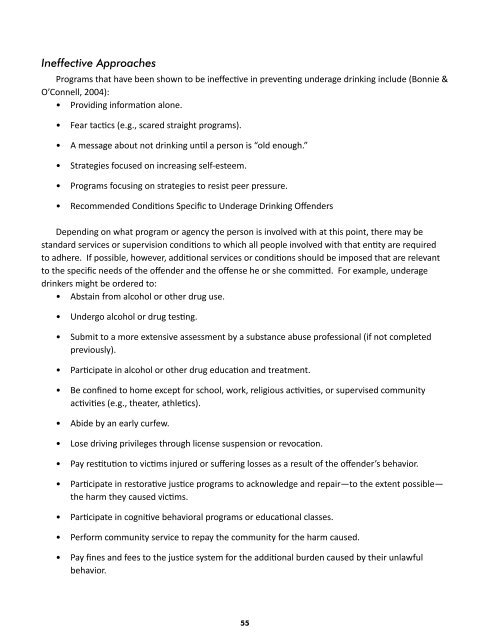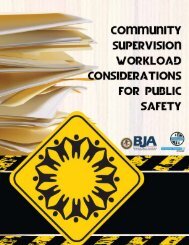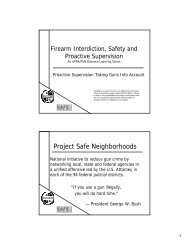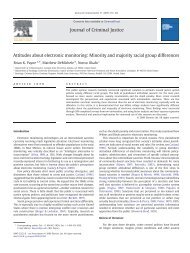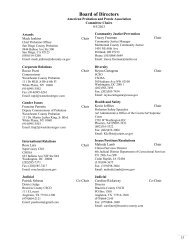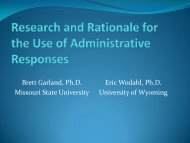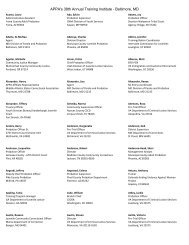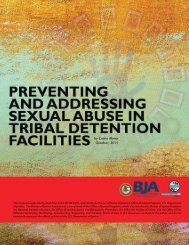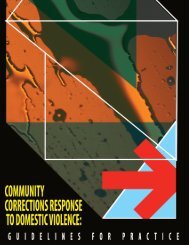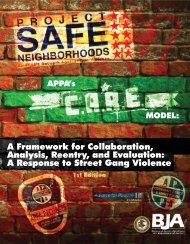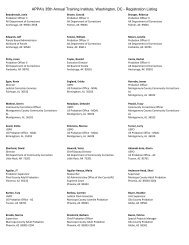Intervention Principles and Practice Guidelines for - Underage ...
Intervention Principles and Practice Guidelines for - Underage ...
Intervention Principles and Practice Guidelines for - Underage ...
You also want an ePaper? Increase the reach of your titles
YUMPU automatically turns print PDFs into web optimized ePapers that Google loves.
Ineffective Approaches<br />
Programs that have been shown to be ineffective in preventing underage drinking include (Bonnie &<br />
O’Connell, 2004):<br />
• Providing in<strong>for</strong>mation alone.<br />
• Fear tactics (e.g., scared straight programs).<br />
• A message about not drinking until a person is “old enough.”<br />
• Strategies focused on increasing self-esteem.<br />
• Programs focusing on strategies to resist peer pressure.<br />
• Recommended Conditions Specific to <strong>Underage</strong> Drinking Offenders<br />
Depending on what program or agency the person is involved with at this point, there may be<br />
st<strong>and</strong>ard services or supervision conditions to which all people involved with that entity are required<br />
to adhere. If possible, however, additional services or conditions should be imposed that are relevant<br />
to the specific needs of the offender <strong>and</strong> the offense he or she committed. For example, underage<br />
drinkers might be ordered to:<br />
• Abstain from alcohol or other drug use.<br />
• Undergo alcohol or drug testing.<br />
• Submit to a more extensive assessment by a substance abuse professional (if not completed<br />
previously).<br />
• Participate in alcohol or other drug education <strong>and</strong> treatment.<br />
• Be confined to home except <strong>for</strong> school, work, religious activities, or supervised community<br />
activities (e.g., theater, athletics).<br />
• Abide by an early curfew.<br />
• Lose driving privileges through license suspension or revocation.<br />
• Pay restitution to victims injured or suffering losses as a result of the offender’s behavior.<br />
• Participate in restorative justice programs to acknowledge <strong>and</strong> repair—to the extent possible—<br />
the harm they caused victims.<br />
• Participate in cognitive behavioral programs or educational classes.<br />
• Per<strong>for</strong>m community service to repay the community <strong>for</strong> the harm caused.<br />
• Pay fines <strong>and</strong> fees to the justice system <strong>for</strong> the additional burden caused by their unlawful<br />
behavior.<br />
55


